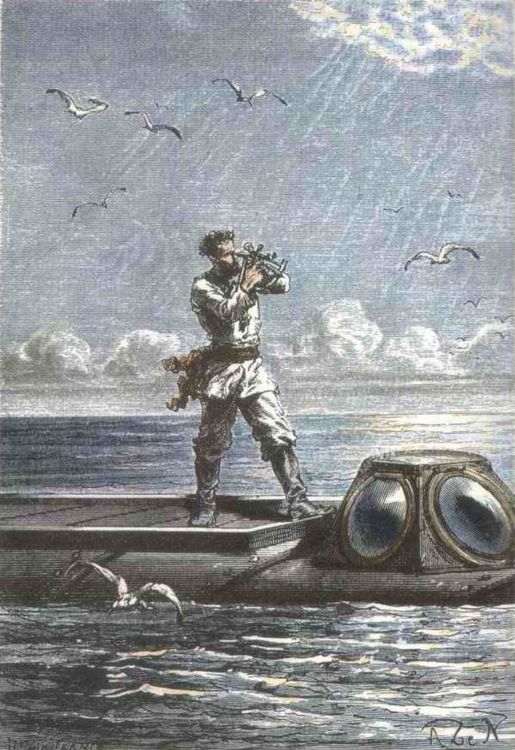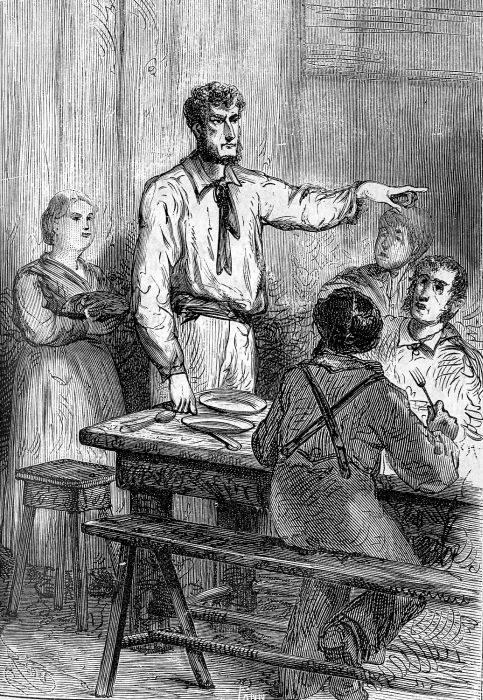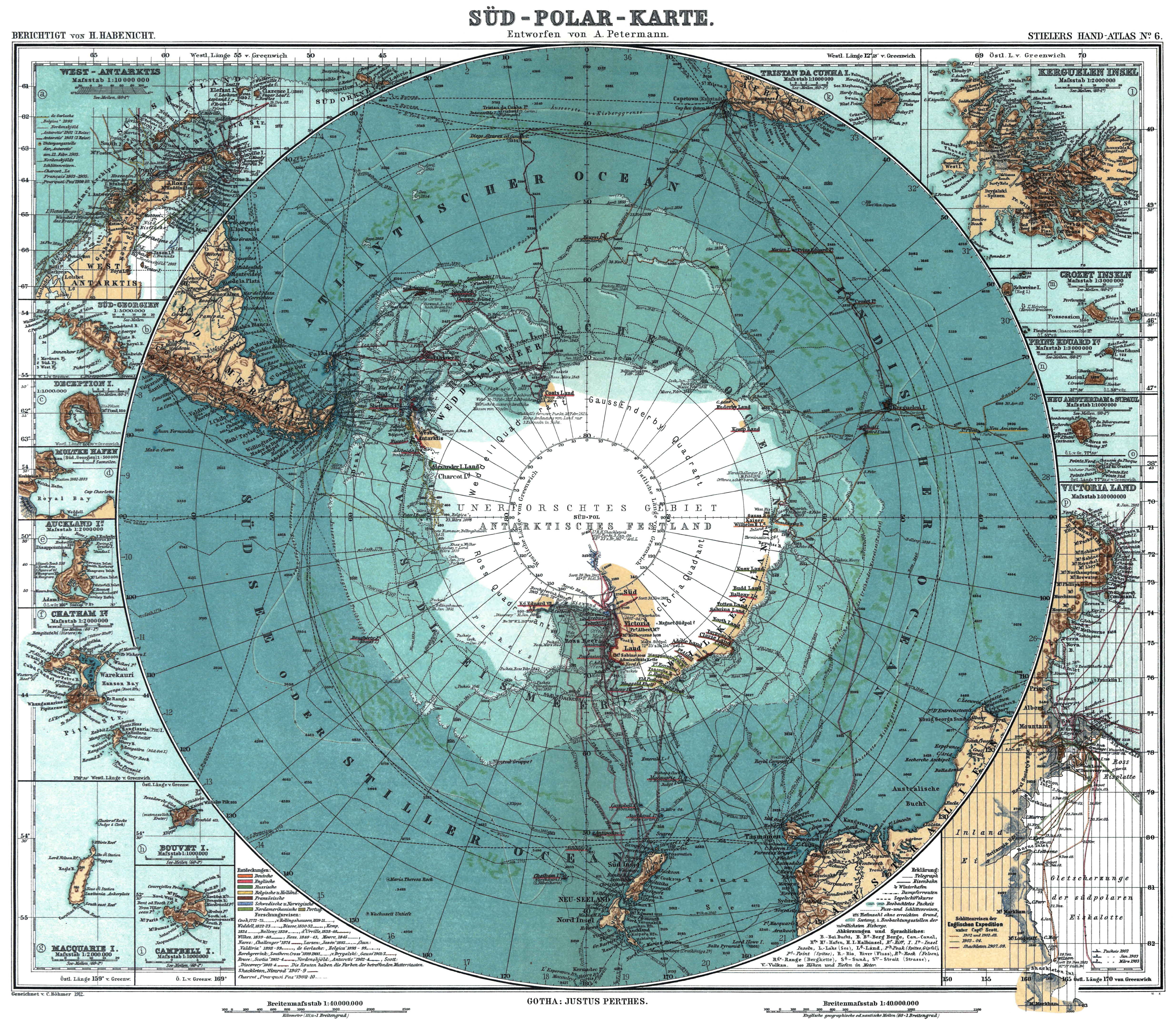|
Maria Theresa Reef
The Maria Theresa Reef is a supposed reef in the South Pacific (south of the French Tuamotu islands and east of New Zealand); it appears to be a phantom reef. It is also known as Tabor Island or Tabor Reef on French maps. Reports Bernhard Krauth explains that Tabor/Maria Theresa's existence was reported in three contemporary newspapers as a dangerous reef seen on 16 November 1843 by a Captain Asaph P. Taber (not "Tabor") of the ''Maria-Theresa'', a New Bedford, Massachusetts, whaler, to be situated at , later adjusted to . According to Krauth, who makes, however, several mistakes, the logbook of the ''Maria Theresa'' may read "Saw breakers." This means that the Captain recorded simply that he saw " breakers," which are sections of reef against which waves break, thus signaling that an island or system of reefs is near. Krauth further claims that Tabor would be in French waters if it existed. Jean-Paul Faivre reports that map no. 5356 of the (French) Naval Hydrographic Office an ... [...More Info...] [...Related Items...] OR: [Wikipedia] [Google] [Baidu] |
Phantom Island
A phantom island is a purported island which was included on maps for a period of time, but was later found not to exist. They usually originate from the reports of early sailors exploring new regions, and are commonly the result of navigational errors, mistaken observations, unverified misinformation, or deliberate fabrication. Some have remained on maps for centuries before being "un-discovered." Unlike lost lands, which are claimed (or known) to have once existed but to have been swallowed by the sea or otherwise destroyed, a phantom island is one that is claimed to exist contemporaneously, but later found not to have existed in the first place (or found not to be an island, as with the Island of California). Examples Some may have been purely mythical, such as the Isle of Demons near Newfoundland, which may have been based on local legends of a haunted island. The far-northern island of Thule was reported to exist by 4th century BCE Greek explorer Pytheas, but informati ... [...More Info...] [...Related Items...] OR: [Wikipedia] [Google] [Baidu] |
CQ Amateur Radio
''CQ Amateur Radio'' (also known simply as ''CQ'' or ''CQ magazine'', and formerly as ''CQ: The Radio Amateur's Journal'') is a magazine for amateur radio enthusiasts first published in 1945. The English language edition is read worldwide; Spanish language edition is published in Spain with some translation Translation is the communication of the Meaning (linguistic), meaning of a #Source and target languages, source-language text by means of an Dynamic and formal equivalence, equivalent #Source and target languages, target-language text. The ...s of articles from the English language edition and some original European content. The magazine was also published in France with partial translation of the original edition between 1995 and 2000 (ISSN 1267-2750). Published by CQ Communications, the title is based on the CQ (call), CQ call. Contests and awards ''CQ Amateur Radio'' organizes, adjudicates, and publishes the results of several annual Contesting, radio competit ... [...More Info...] [...Related Items...] OR: [Wikipedia] [Google] [Baidu] |
Phantom Islands
A phantom island is a purported island which was included on maps for a period of time, but was later found not to exist. They usually originate from the reports of early sailors exploring new regions, and are commonly the result of navigational errors, mistaken observations, unverified misinformation, or deliberate fabrication. Some have remained on maps for centuries before being "un-discovered." Unlike lost lands, which are claimed (or known) to have once existed but to have been swallowed by the sea or otherwise destroyed, a phantom island is one that is claimed to exist contemporaneously, but later found not to have existed in the first place (or found not to be an island, as with the Island of California). Examples Some may have been purely mythical, such as the Isle of Demons near Newfoundland, which may have been based on local legends of a haunted island. The far-northern island of Thule was reported to exist by 4th century BCE Greek explorer Pytheas, but informa ... [...More Info...] [...Related Items...] OR: [Wikipedia] [Google] [Baidu] |
Captain Nemo
Captain Nemo (; later identified as an Indian, Prince Dakkar) is a fictional character created by the French novelist Jules Verne (1828–1905). Nemo appears in two of Verne's science-fiction classics, ''Twenty Thousand Leagues Under the Seas'' (1870) and ''The Mysterious Island'' (1875). He also makes a brief appearance in a play written by Verne with the collaboration of Adolphe d'Ennery, '' Journey Through the Impossible'' (1882). Nemo is a mysterious figure. Though originally of unknown nationality, he is later described as the son of an Indian raja. A scientific visionary, he roams the depths of the seas in his submarine, the ''Nautilus'', which was assembled from parts manufactured in several different countries, then shipped to a cover address. The captain is consumed by a hunger for vengeance and hatred of imperialism; the British Empire is ultimately revealed as his main antagonist. Nemo has appeared in various film adaptations of Verne's novels, where he has been portra ... [...More Info...] [...Related Items...] OR: [Wikipedia] [Google] [Baidu] |
Tom Ayrton
Tom Ayrton is a fictional character who appears in two novels by French author Jules Verne. He is first introduced as a major character in the novel ''In Search of the Castaways'' (1867–1868). He then reappears in a later novel, ''The Mysterious Island'' (1874), in which his fate, left unknown at the ending of the previous novel, is resolved, and during the course of which his character undergoes change and achieves a redemption. Biography ''In Search of the Castaways'' A Scottish able seaman, Ayrton served as quartermaster on board the three-mast ship ''Britannia'', under the command of Captain Harry Grant. Differing opinions and extreme disputes with Grant led Ayrton to attempt leading a mutiny, the failure of which ended in his being expelled from the ship. Left behind alone on Australian shores, Ayrton learned nothing of the calamity that soon befell Grant's ship and crew. Teaming up with a band of escaped convicts, Ayrton began a life of crime around Australia, becoming ... [...More Info...] [...Related Items...] OR: [Wikipedia] [Google] [Baidu] |
Coordinates
In geometry, a coordinate system is a system that uses one or more numbers, or coordinates, to uniquely determine the position of the points or other geometric elements on a manifold such as Euclidean space. The order of the coordinates is significant, and they are sometimes identified by their position in an ordered tuple and sometimes by a letter, as in "the ''x''-coordinate". The coordinates are taken to be real numbers in elementary mathematics, but may be complex numbers or elements of a more abstract system such as a commutative ring. The use of a coordinate system allows problems in geometry to be translated into problems about numbers and ''vice versa''; this is the basis of analytic geometry. Common coordinate systems Number line The simplest example of a coordinate system is the identification of points on a line with real numbers using the ''number line''. In this system, an arbitrary point ''O'' (the ''origin'') is chosen on a given line. The coordinate of a ... [...More Info...] [...Related Items...] OR: [Wikipedia] [Google] [Baidu] |
Adelie Coast , a drowned fjord on the continental margin of East Antarctica
{{disambiguation ...
Adelie or Adélie may refer to: * Adélie Land, a claimed territory on the continent of Antarctica * Adelie Land meteorite, a meteorite discovered on December 5, 1912, in Antarctica by Francis Howard Bickerton * Adélie penguin, a species of penguin common along the entire coast of the Antarctic continent * Adélie Valley Adélie Valley (), also variously known as Adilie Valley, Dumont d'Urville Trough or Adélie Trough, is a drowned fjord (undersea valley) on the continental margin of East Antarctica. Named in association with this long named portion of Wilkes Land ... [...More Info...] [...Related Items...] OR: [Wikipedia] [Google] [Baidu] |
In Search Of The Castaways
''In Search of the Castaways'' (french: Les Enfants du capitaine Grant, lit=The Children of Captain Grant) is a novel by the French writer Jules Verne, published in 1867–68. The original edition, published by Hetzel, contains a number of illustrations by Édouard Riou. In 1876, it was republished by George Routledge & Sons as a three volume set titled ''A Voyage Round The World''. The three volumes were subtitled ''South America'', ''Australia'', and ''New Zealand''. As often with Verne, English translations have appeared under different names; another edition has the overall title ''Captain Grant's Children'' and has two volumes subtitled ''The Mysterious Document'' and ''Among the Cannibals''. Plot summary The book tells the story of the quest for Captain Grant of the ''Britannia''. After finding a bottle the captain had cast into the ocean after the ''Britannia'' is shipwrecked, Lord and Lady Glenarvan of Scotland contact Mary and Robert, the young daughter and son of Cap ... [...More Info...] [...Related Items...] OR: [Wikipedia] [Google] [Baidu] |
Jules Verne
Jules Gabriel Verne (;''Longman Pronunciation Dictionary''. ; 8 February 1828 – 24 March 1905) was a French novelist, poet, and playwright. His collaboration with the publisher Pierre-Jules Hetzel led to the creation of the ''Voyages extraordinaires'', a series of bestselling adventure novels including ''Journey to the Center of the Earth'' (1864), ''Twenty Thousand Leagues Under the Seas'' (1870), and '' Around the World in Eighty Days'' (1872). His novels, always well documented, are generally set in the second half of the 19th century, taking into account the technological advances of the time. In addition to his novels, he wrote numerous plays, short stories, autobiographical accounts, poetry, songs and scientific, artistic and literary studies. His work has been adapted for film and television since the beginning of cinema, as well as for comic books, theater, opera, music and video games. Verne is considered to be an important author in France and most of Europe, where ... [...More Info...] [...Related Items...] OR: [Wikipedia] [Google] [Baidu] |
Oceania
Oceania (, , ) is a region, geographical region that includes Australasia, Melanesia, Micronesia, and Polynesia. Spanning the Eastern Hemisphere, Eastern and Western Hemisphere, Western hemispheres, Oceania is estimated to have a land area of and a population of around 44.5 million as of 2021. When compared with (and sometimes described as being one of) the continents, the region of Oceania is the smallest in land area and the list of continents and continental subregions by population, second least populated after Antarctica. Its major population centres are Sydney, Melbourne, Brisbane, Perth, Auckland, Adelaide, Honolulu, and Christchurch. Oceania has a diverse mix of economies from the developed country, highly developed and globally competitive market economy, financial markets of Australia, French Polynesia, Hawaii, Hawaii, New Caledonia, and New Zealand, which rank high in quality of life and Human Development Index, to the much least developed countries, less developed ... [...More Info...] [...Related Items...] OR: [Wikipedia] [Google] [Baidu] |
The Mysterious Island
''The Mysterious Island'' (french: L'Île mystérieuse) is a novel by Jules Verne, published in 1875. The original edition, published by Hetzel, contains a number of illustrations by Jules Férat. The novel is a crossover sequel to Verne's famous ''Twenty Thousand Leagues Under the Seas'' (1870) and ''In Search of the Castaways'' (1867–68), though its themes are vastly different from those books. An early draft of the novel, initially rejected by Verne's publisher and wholly reconceived before publication, was titled ''Shipwrecked Family: Marooned with Uncle Robinson'', seen as indicating the influence of the novels ''Robinson Crusoe'' and ''The Swiss Family Robinson''. Verne developed a similar theme in his later novel, ''Godfrey Morgan'' (French: ''L'École des Robinsons'', 1882). The chronology of ''The Mysterious Island'' is incompatible with that of the original ''Twenty Thousand Leagues Under the Sea'', whose plot begins in 1866, while ''The Mysterious Island'' begins d ... [...More Info...] [...Related Items...] OR: [Wikipedia] [Google] [Baidu] |
Wachusett Reef
Wachusett Reef was a phantom reef in the Antarctic Ocean. Captain Lambert of the ship ''Wachusett'' reported that on June 4, 1899 he passed over a reef which appeared to be of coral formation in approximately latitude . The reef appeared to be about wide. The bottom showed of a dark gray color with deep blue on both sides of the reef. The depth was estimated at from ; unfortunately no soundings were taken. The 2015 edition of the ''National Geographic Atlas of the World'' still shows Wachusett Reef, with a depth of . Nevertheless, its existence is doubtful, making it a phantom reef. Other nearby historically reported reefs which appear to not exist include Ernest Legouve Reef, Jupiter Reef, and Maria Theresa Reef The Maria Theresa Reef is a supposed reef in the South Pacific (south of the French Tuamotu islands and east of New Zealand); it appears to be a phantom reef. It is also known as Tabor Island or Tabor Reef on French maps. Reports Bernhard Kraut .... Notes ... [...More Info...] [...Related Items...] OR: [Wikipedia] [Google] [Baidu] |







